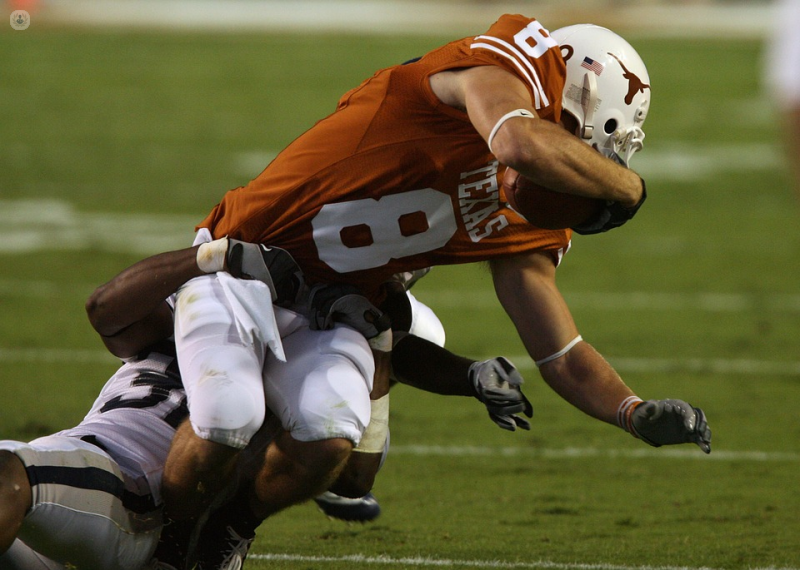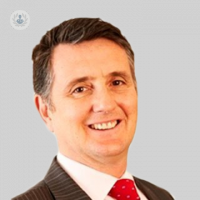Dislocated shoulder: top facts
Escrito por:Dislocating a joint is a very painful experience, especially in a joint as large and important as the shoulder. This injury often requires a trip to A&E and may need physiotherapy. Skilled orthopaedic surgeon Mr Steven Corbett is here with all the facts you need to know about a dislocated shoulder.

Top 5 facts:
- The shoulder is the most mobile joint within the body and hence this means that it can dislocate easily.
- A dislocation can be complete or partial (subluxation).
- Dislocations are most common in the age group 16 to 25. They are more common in males than females.
- The most common means of dislocation is trauma, e.g. sporting injuries or falls.
- The shoulder can dislocate forwards (anterior), backwards (posterior) or downwards (inferior).
When a dislocation occurs, the shoulder is obviously painful. The shoulder may appear out of place. On some occasions there is altered sensation in the arm.
The most common type of dislocated shoulder is an anterior dislocation, whereby the ball moves forwards out of the joint. Anterior dislocation can occur with the arm out to the side in a clothes line-type position.
A posterior dislocation can often occur with the arm outstretched in front forcing the ball backwards out of the socket.
An inferior dislocation may occur when someone falls with their arm above the head
Dislocated shoulder treatment
Sometimes the shoulder will reduce back into the joint itself, but often the shoulder has to be reduced in hospital. Usually this is in the Accident and Emergency Department with analgesia and sedation. If this fails, then occasionally this has to be done under anaesthetic.
Once reduced, the arm is placed into a sling. The time in the sling can vary between 1-3 weeks, depending on circumstances. Physiotherapy is then commenced.
Can the shoulder dislocate again?
If a patient is aged 17 to 20 years, the re-dislocation rate can be as high as 70-90% depending on sporting activities. These often occur within two years of the first dislocation. If a patient is over 40 years then the re-dislocation rate is much lower.
The chance of a further dislocation has a bearing on whether a patient needs surgery. If there is a high risk of re-dislocation, the surgical option becomes more likely.
If surgery is performed the majority of stabilisation procedures are performed arthroscopically (keyhole surgery). Occasionally an open procedure is needed.
How long does it take to fully recover from a dislocated shoulder?
If a non-operative approach is undertaken it normally takes two to three months for the shoulder to return to normal; if surgery is performed then a recovery period of three to six months is likely.
It is important to recognise that whilst the shoulder may not dislocate again, a patient may have a long term signs and symptoms of instability, which also can also mean a surgical procedure may be necessary.
Additionally, in the older age group when a shoulder dislocates, there may be associated injury to the rotator cuff tendons.


